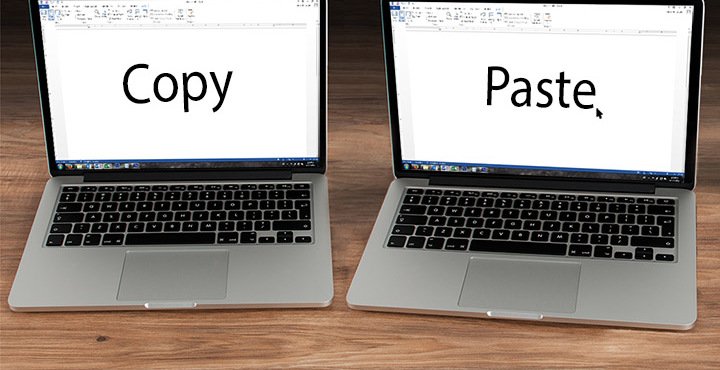Written by Scribendi
Is It Considered Plagiarism If You Paraphrase?
How Do I Paraphrase a Source without Running the Risk of Plagiarizing?
Paraphrasing vs. Quoting: What's the Difference?
Paraphrasing vs. Summarizing
How to Paraphrase a Sentence
Direct Quotation
Omissions and Editorial Changes
Paraphrasing
All You Need to Know about Paraphrasing
When Should You Paraphrase Information?
What Is the Purpose of Paraphrasing?
Understand the Text You Are Paraphrasing
Do Paraphrases Need to Be Cited?
Example of Paraphrasing
How to Cite a Paraphrase
Don't Start Paraphrasing by Picking Up a Thesaurus
Don't Copy without Quotation Marks
Paraphrase with a Direct Quote Example
Don't Paraphrase Too Closely
Example of Paraphrases Being Too Similar to Their Sources
How to Paraphrase and Tips for Paraphrasing Correctly
Write Down Paraphrases of a Source on Notecards
Paraphrase from Your Own Point-Form Notes on a Source
How to Paraphrase Using Plotnick's Method
Practice Two-Step Paraphrasing: Sentence Structure and Word Choice
Understand Basic Sentence Structures
Vary the Use of Active and Passive Voice
Vary Sentence Length
Vary Word Choice
How to Cite a Paraphrase
Citing a Paraphrase in APA, MLA, and Chicago Styles
How to Paraphrase in APA
APA Paraphrasing Examples
How to Paraphrase in MLA
MLA Paraphrasing Examples
How to Cite a Paraphrase in Chicago Style
Chicago Style Paraphrasing Examples
Conclusion
FAQs
What Is the Meaning of Paraphrase?
How Do You Put Things in Your Own Words?
What Does It Mean to Paraphrase Something?
As if the research process isn't hard enough already—finding relevant and reliable sources, reading and interpreting material, and selecting key quotations/information to support your findings/arguments are all essential when writing a research essay.
Academic writers and students face the additional stress of ensuring that they have properly documented their sources. Failure to do so, whether intentionally or unintentionally, could result in plagiarism, which is a serious academic offense.
That's why we've written this article: to provide tips for proper paraphrasing. We'll start with an overview of the difference between paraphrasing and quoting, and then we'll provide a list of paraphrasing dos and don'ts, followed by strategies for proper paraphrasing.
We will include paraphrasing examples throughout to illustrate best practices for paraphrasing and citing paraphrased material.
Is It Considered Plagiarism If You Paraphrase?
As mentioned in our previous article on plagiarism, "simply taking another writer's ideas and rephrasing them as one's own can be considered plagiarism as well."
Paraphrasing words is acceptable if you interpret and synthesize the information from your sources, rephrase the ideas in your own words, and add citations at the sentence level. It is NOT acceptable if you simply copy and paste large chunks of an original source and modify them slightly, hoping that your teacher, editor, or reviewer won't notice.
Passing off another's work as one's own is a form of intellectual theft, so researchers and students must learn how to paraphrase quotes and be scrupulous when reporting others' work.
How Do I Paraphrase a Source without Running the Risk of Plagiarizing?
You might be familiar with all this. Still, you might be concerned and find yourself asking, "How do I paraphrase a source correctly without running the risk of unintentional plagiarism?"
For many writers, especially those who are unfamiliar with the concepts of a particular field, learning how to paraphrase a source or sentence is daunting.
To avoid charges of plagiarism, you must not only document your sources correctly using an appropriate style guide (e.g., APA, Harvard, or Vancouver) for your reference list or bibliography but also handle direct quotations and paraphrasing correctly.

Paraphrasing vs. Quoting: What's the Difference?
Quoting uses the exact words and punctuation from your source, whereas paraphrasing involves synthesizing material from the source and putting things in your own words. Citing paraphrases is just as necessary as citing quotations.
Even if you understand quoting versus paraphrasing, you might still need some additional paraphrasing help or guidance on how to paraphrase a quote.
Paraphrasing vs. Summarizing
Summarizing is when you're discussing the main point or overview of a piece, while paraphrasing is when you're translating a direct quote into language that will be easy for your readers to understand.
It's easy to see how the two are similar, given that the steps to paraphrasing and summarizing both include putting ideas into your own words.
But summarizing and paraphrasing are distinctly different. Paraphrasing highlights a certain perspective from a source, and summarizing offers more of an overview of an entire subject, theme, or book.
You can usually tell the difference between paraphrasing and summarizing by the length of what you're writing abore writing about. If you’re writing about a quote, that would be a smaller theme inside a larger work, so you'd paraphrase.
If you're writing about the themes or plot of an entire book, you'd summarize. Summaries are usually shorter than the original work.
Learn How to Format Quotation Marks here.
How to Paraphrase a Sentence
When learning how to paraphrase a quote, you first need to consider whether you should be paraphrasing a text or quoting it directly.
If you find the perfect quote from a reliable source that fits your main topic, supports your argument, and lends authority to your paper but is too long (40+ words) or complex, it should be paraphrased. Long/complex quotes can also be shortened with omissions and editorial changes (as discussed below).
Direct Quotation
Introduce the quote with a signal phrase (e.g., "According to Ahmad [2017] . . .") and insert the entire quotation, indicating the text with quotation marks or indentation (i.e., a block quote).
Omissions and Editorial Changes
If you only need to use parts of a long quotation, you can insert an ellipsis (. . .) to indicate omissions. You can also make editorial changes in square brackets [like this].
Keep in mind that you need to reflect the author's intent accurately when using this strategy. Don't change important words in a quotation so that it better fits your argument, as this is a form of intellectual fraud.
Changes in square brackets should only be used to clarify the text without altering meaning in the context of the paper (e.g., clarifying antecedents and matching verb tense). They signal to the reader that these changes were made by the author of the essay and not by the author of the original text.
Paraphrasing
Demonstrate that you clearly understand the text by expressing the main ideas in your own unique style and language. Now, you might be asking yourself, "Do paraphrases need to be cited like quotes?" The answer is a resounding "yes."

All You Need to Know about Paraphrasing
When deciding whether to paraphrase or use a direct quote, it is essential to ask what is more important: the exact words of the source or the ideas.
If the former is important, consider quoting directly. If the latter is important, consider paraphrasing or summarizing.
When Should You Paraphrase Information?
Direct quotation is best for well-worded material that you cannot express any more clearly or succinctly in your own style. It's actually the preferred way of reporting sources in the arts, particularly in literary studies.
Shortening a long quote is a great way to retain the original phrasing while ensuring that the quote reads well in your paper. However, direct quotations are often discouraged in the sciences and social sciences, so keep that in mind when deciding whether to paraphrase or quote.
Paraphrasing is best used for long portions of text that you can synthesize into your own words. Think of paraphrasing as a form of translation; you are translating an idea in another "language" into your own language. The idea should be the same, but the words and sentence structure should be totally different.
What Is the Purpose of Paraphrasing?
The purpose of paraphrasing is to draw together ideas from multiple sources to convey information to your reader clearly and succinctly.
As a student or researcher, your job is to demonstrate that you understand the material you've read by expressing ideas from other sources in your own style, adding citations to the paraphrased material as appropriate.
If you think the purpose of paraphrasing is to help you avoid thinking for yourself, you are mistaken.
Understand the Text You Are Paraphrasing
When you paraphrase, be sure that you understand the text clearly. The purpose of paraphrasing is to interpret the information you researched for your reader, explaining it as though you were speaking to a colleague or teacher. In short, paraphrasing is a skill that demonstrates one's comprehension of a text.
Do Paraphrases Need to Be Cited?
Yes, paraphrases always need to be cited. Citing paraphrased material helps you avoid plagiarism by giving explicit credit to the authors of the material you are discussing.
Citing your paraphrases ensures academic integrity. When you sit down to write your paper, however, you might find yourself asking these questions: "Do paraphrases need to be cited? How do I paraphrase?"
Example of Paraphrasing
Here is a quick paraphrase example that demonstrates how to cite paraphrased ideas. The opening lines to one of Juliet's most famous speeches are "O Romeo, Romeo! Wherefore art thou Romeo? / Deny thy father and refuse thy name; / Or, if thou wilt not, be but sworn my love, / And I'll no longer be a Capulet" (Romeo and Juliet, 2.2.880–884).
If you needed to paraphrase these lines in an essay, you could do so as follows:
Juliet muses about why Romeo's family name is Montague and concludes that if either gave up their name (and thereby their family affiliations) for the other, they could be together (Romeo and Juliet, 2.2.880–884).
How to Cite a Paraphrase
Generally speaking, you must include an in-text citation at the end of a paraphrased sentence.
However, if your paraphrased material is several sentences long, then you should check with your preferred style guide. Some style guides (such as APA) call for a paraphrase citation after the first paraphrased sentence. Other style guides (such as MLA) call for a paraphrase citation after the last paraphrased sentence.
Remember, no matter what style guide you use, it is not necessary to cite every single sentence of paraphrased material in a multi-sentence paraphrase.
Don't Start Paraphrasing by Picking Up a Thesaurus
This might shock you, but a thesaurus is NOT the answer to the problem of paraphrasing. Why? Using a thesaurus to swap out a few words here and there from an original source is a form of patchwriting, which is a type of plagiarism.
You shouldn't have to resort to a thesaurus unless you are completely unsure about what a word means—although, in that case, a dictionary might be a better tool. Ideally, you should be able to use clear, simple language that is familiar to you when reporting findings (or other information) from a study.
The problem with using a thesaurus is that you aren't really using your own words to paraphrase a text; you're using words from a book. Plus, if you're unfamiliar with a concept or if you have difficulty with English, you might choose the wrong synonym and end up with a paraphrase like this: "You may perhaps usage an erroneous word."
This is a common mistake among writers who are writing about a field with which they are unfamiliar or who do not have a thorough grasp of the English language or the purpose of paraphrasing.
Don't Copy without Quotation Marks
If you choose to keep a few phrases from the original source but paraphrase the rest (i.e., combining quoting and paraphrasing), that's okay, but keep in mind that phrasing from the source text must be reproduced in an exact manner within quotation marks.
Direct quotations are more than three consecutive words copied from another source, and they should always be enclosed in quotation marks or offset as a block quotation.
Paraphrase with a Direct Quote Example
A sentence that combines a direct quote with paraphrased material would look like this:
In "The Laugh of the Medusa," Cixous highlights women's writing as a specific feat and speaks "about what it will do" when it has the same formal recognition as men's writing (Cixous 875).
The paraphrased paragraph of Cixous' essay includes a direct quote and a paraphrase citation.
Did you know that copying portions of a quote without quotation marks (i.e., patchwriting) is a form of plagiarism—even if you provide an in-text citation? If you've reworded sections of a quote in your own style, simply enclose any direct quotations (three or more words) in quotation marks to indicate that the writing is not your own.
Don't Paraphrase Too Closely
When learning how to paraphrase, you need to distinguish between appropriate and inappropriate forms of paraphrasing. The Office of Research and Integrity, a branch of the U.S. Department of Health and Human Services, puts it this way:
Taking portions of text from one or more sources, crediting the author/s, but only making 'cosmetic' changes to the borrowed material, such as changing one or two words, simply rearranging the order, voice (i.e., active vs. passive) and/or tense of the sentences is NOT paraphrasing.
Example of Paraphrases Being Too Similar to Their Sources
What does paraphrasing too closely look like? Here is an overly close paraphrase example of the U.S. Department of Health and Human Services' description of plagiarizing:
Using sections of a source, citing it, but only making surface-level changes to the language (such as changing a few words, the verb tense, the voice, or word order) fails as a paraphrase. True paraphrasing involves changing the words and syntactical structure of the original source. Keep reading for strategies for paraphrasing properly.
Get Help with Proper Paraphrasing
Hire an Expert Academic Editor, or Get a Free Sample
How to Paraphrase and Tips for Paraphrasing Correctly
In an article on how to paraphrase, the Purdue University Online Writing Lab suggests that you read the source text carefully and write paraphrases on notecards. You can then compare your version with the original, ensuring that you've covered all the key information and noting any words or phrases that are too closely paraphrased.
Your notecards should be labeled with the author(s) and citation information of the source text so that you don't lose track of which source you used. You should also note how you plan to use the paraphrase in your essay.
Write Down Paraphrases of a Source on Notecards
If you are a visual learner, the benefit of this strategy is that you can visualize the content you intend to paraphrase.
Because a notecard is a tangible object, you can physically arrange it in an essay outline, moving the right information to the appropriate paragraph so that your essay flows well. (If you're not sure how to write an outline, check out our article.)
Plus, having a physical copy of paraphrased information makes it harder for you to accidentally plagiarize by copying and pasting text from an original source and forgetting to paraphrase or quote it properly. Writing out your paraphrase allows you to distance yourself from the source text and express the idea in your own unique style.
Paraphrase from Your Own Point-Form Notes on a Source
For more paraphrasing help, Jerry Plotnick from the University College Writing Centre at the University of Toronto provides a similar strategy for paraphrasing.
Plotnick advises that you take point-form notes of text that you want to use in your paper. Don't use full sentences, but instead "capture the original idea" in a few words and record the name of the source.
This strategy is similar to the notecard idea, but it adds another step. Instead of just reading the source carefully and writing your complete paraphrase on a notecard, Plotnick recommends using point-form notes while researching your sources. These notes can then be used to paraphrase the source text when you are writing your paper.
Like handwriting your paraphrases on notecards, taking notes and coming back to them later will help you distance yourself from the source, allowing you to forget the original wording and use your own style.
How to Paraphrase Using Plotnick's Method
The Plotnick method above describes how to use point-form notes while researching a paper to keep your paraphrasing original. To paraphrase in your paper using Plotnick's method above, look at your sources and try the following:
-
Write down the basic point(s) you want to discuss on a notecard (in your own words).
-
Take your notecard points and turn them into sentences when you write your essay.
-
Add the reference for the source.
-
Compare your paraphrase to the original source to make sure your words are your own.
Practice Two-Step Paraphrasing: Sentence Structure and Word Choice
In an article on how to paraphrase by the Writing Center at the University of Wisconsin-Madison, the first two strategies are acknowledged—taking notes and looking away from the source before you write your paraphrase.
The authors then suggest another two-step strategy for paraphrasing: change the structure first and then change the words. Let's break down this process a bit further.
Understand Basic Sentence Structures
Sentences in English have two main components: a subject and a predicate. The subject is who or what is performing an action (i.e., a noun or pronoun), and the predicate is what the subject is doing (i.e., a verb). Sentences can be simple, compound, complex, or compound-complex.
Here are some paraphrase examples using different sentence structures:
-
Simple: It was difficult.
-
Compound: It was difficult, but she knew there was no going back.
-
Complex: Although it was difficult, she knew there was no going back.
-
Compound-complex: Although it was difficult, she knew there was no going back, so she kept calm and carried on.
Once you have identified the structure of the original sentence, you can reconstruct it using one of the different types of sentences illustrated above.
Vary the Use of Active and Passive Voice
You can also change passive voice to active voice, or vice versa.
-
The active voice is structured like this: Subject + Verb + Object (e.g., She learned how to paraphrase.)
-
The passive voice is structured like this: Object + "To Be" Verb + Past Participle (e.g., How to paraphrase was learned by the girl.)
See how awkward the passive sentence example is? It's best not to force a sentence into an unnatural sentence structure.
Otherwise, you'll end up with Yoda-speak: "Forced to learn how to paraphrase a sentence, the girl was." (Did you like the unintentional "force" pun?)
Vary Sentence Length
Another way to distinguish your paraphrase from the original source is to use different sentence lengths. Often, scholarly articles are written using long, compound, complex, or compound-complex sentences. Use short sentences instead.
Break down complex ideas into easy-to-understand material. Alternatively, you can combine several ideas from the source text into one long sentence, synthesizing the material. Try to stick with your own style of writing so that the paraphrased text matches that of the rest of your document.
Vary Word Choice
Once the paraphrased sentence structure is sufficiently different from the original sentence structure, you can replace the wording of the original text with words you understand and are comfortable with.
Paraphrasing isn't meant to hide the fact that you are copying someone else's idea using clever word-swapping techniques. Rather, it is meant to demonstrate that you are capable of explaining the text in your own language.
One handy article on word choice by the Writing Center at the University of North Carolina at Chapel Hill lists some strategies for successful word choice, such as eliminating jargon and simplifying unnecessary wordiness. While this applies to academic writing in general, the "questions to ask yourself" are also useful as great paraphrasing help.
How to Cite a Paraphrase
Once you have completed a sentence-long paraphrase, you include an in-text citation at the end of that sentence. However, if your paraphrased material is several sentences long, then you should check with your preferred style guide.
Some style guides (such as APA) call for a paraphrase citation after the first paraphrased sentence. Other style guides (such as MLA) call for a paraphrase citation after the last paraphrased sentence.
Remember, no matter what style guide you use, it is not necessary to cite every single sentence of paraphrased material in a multi-sentence paraphrase.

Citing a Paraphrase in APA, MLA, and Chicago Styles
To paraphrase properly, you need to explain a text in your own words without using a direct quote. Keep in mind, however, that different styles require different formats when it comes to documenting paraphrased sources. Some styles require a citation after the first paraphrased sentence, while others require a citation after the last.
For this reason, we've outlined examples of how to paraphrase in the APA, MLA, and Chicago styles below. Be sure to check with your professor to see which style your essay requires.
How to Paraphrase in APA
APA guidelines for paraphrasing include citing your source on the first mention in either the narrative or parenthetical format. Here's a refresher of both formats:
-
Narrative format: Koehler (2016) noted the dangers of false news.
-
Parenthetical format: The news can distort our perception of an issue (Koehler, 2016).
Here's an example of how to paraphrase from a primary source in APA:
-
Dudley (1999) states that "direct quote" or paraphrase (Page #).
Note: It's not always necessary to include the page number, but it's recommended if it'll help readers quickly find a passage in a book.
APA Paraphrasing Examples
Below are a couple of examples of how to paraphrase in APA. Keep in mind that for longer paraphrases, you don't have to add the citation again if it's clear that the same work is being paraphrased.
Short paraphrase:
-
Stephenson (1992) outlined a case study of a young man who showed increasing signs of insecurity without his father (pp. 23–27).
Long paraphrase:
-
Johnson et al. (2013) discovered that for small-breed dogs of a certain age, possession aggression was associated with unstable living environments in earlier years, including fenced-in yards with multiple dogs all together for long periods of time. However, these effects were mediated over time. Additionally, with careful training, the dogs showed less possession aggression over time. These findings illustrate the importance of positive reinforcement over the length of a dog's life.
How to Paraphrase in MLA
When paraphrasing in MLA, include an in-text citation at the end of the last paraphrased sentence.
Your in-text citation can be done either parenthetically or in prose, and it requires the last name of the cited author and the page number of the source you're paraphrasing from. Here are MLA citation examples:
Parenthetical:
-
Paraphrase (Author's Last Name Page #)
In prose:
-
Author's Last Name states that paraphrase (Page #)
MLA Paraphrasing Examples
In addition to adding a short in-text citation to the end of your last paraphrased sentence, MLA requires that this source be included in your Works Cited page, so don't forget to add it there as well.
Here are two examples of how to paraphrase in MLA:
Parenthetical:
-
In an attempt to communicate his love for Elizabeth, all Mr. Darcy did was communicate the ways in which he fought to hide his true feelings (Austen 390).
Narrative:
-
Rowling explains how happy Harry was after being reunited with his friends when he thought all was lost (17).
How to Cite a Paraphrase in Chicago Style
Paraphrasing correctly in Chicago style depends on whether you're using the notes and bibliography system or the author-date system.
The notes and bibliography system includes footnotes or endnotes, whereas the author-date system includes in-text citations.
Chicago Style Paraphrasing Examples
Below, you'll find the correct way to format citations when paraphrasing in both the notes and bibliography and author-date systems.
Notes and Bibliography
For the notes and bibliography system, add a superscript at the end of your paraphrase that corresponds to your footnote or endnote.
-
Johnson explains that there was no proof in the pudding.1
Author-Date
For the author-date style, include the page number of the text you're referencing at the end of your paraphrase. If you mention the author, include the year the source was published.
-
Johnson (1995) explains that there was no proof in the pudding (21).
Conclusion
In summary, the purpose of paraphrasing is not to simply swap a few words; rather, it is to take ideas and explain them using an entirely different sentence structure and choice of words. It has a greater objective; it shows that you've understood the literature on your subject and are able to express it clearly to your reader.
In other words, proper paraphrasing shows that you are familiar with the ideas in your field, and it enables you to support your own research with in-text citations.
Knowing when to paraphrase or quote strengthens your research presentation and arguments. Asking for paraphrasing help before you accidentally plagiarize shows that you understand the value of academic integrity.
If you need help, you might consider an editing and proofreading service, such as Scribendi. While our editors cannot paraphrase your sources for you, they can check whether you've cited your sources correctly according to your target style guide via our Academic Editing service.
Even if you need more than just paraphrase citation checks, our editors can help you decide whether a direct quote is stronger as a paraphrase, and vice versa. Editors cannot paraphrase quotes for you, but they can help you learn how to paraphrase a quote correctly.
Get Help with Proper Paraphrasing
Hire an Expert Academic Editor, or Get a Free Sample
FAQs
What Is the Meaning of "Paraphrase"?
Paraphrasing is when you write text from another source in your own words. It's a way of conveying to your reader or professor that you understand a specific source material well enough to describe it in your own style or language without quoting it directly.
Paraphrasing (and citing your paraphrases) allows you to explain and share ideas you've learned from other sources without plagiarizing them.
How Do You Put Things in Your Own Words?
You can write things in your own words by taking original notes on the sources you're reading and using those notes to write your paraphrase while keeping the source material out of sight.
You can also practice putting things in your own words by changing sentences from passive to active, or vice versa, or by varying word choice and sentence length. You can also try Jeremy Plotnick's idea of paraphrasing from your own point-form notes.
What Does It Mean to Paraphrase Something?
When you're paraphrasing something, it means you are putting someone else's writing in your own words. You're not copying or quoting content directly. Instead, you are reading someone else's work and explaining their ideas in your own way.
Paraphrasing demonstrates that you understand the material you're writing about and gives your reader the opportunity to understand the material in a simplified way that is different from how the original author explained it.
About the Author
Scribendi's in-house editors work with writers from all over the globe to perfect their writing. They know that no piece of writing is complete without a professional edit, and they love to see a good piece of writing turn into a great one after the editing process. Scribendi's in-house editors are unrivaled in both experience and education, having collectively edited millions of words and obtained nearly 20 degrees collectively. They love consuming caffeinated beverages, reading books of various genres, and relaxing in quiet, dimly lit spaces.










